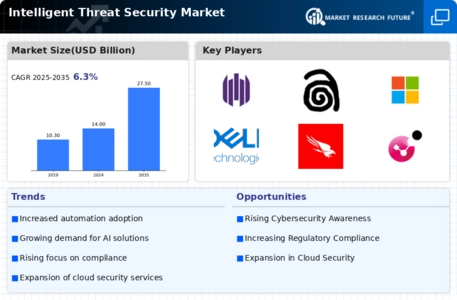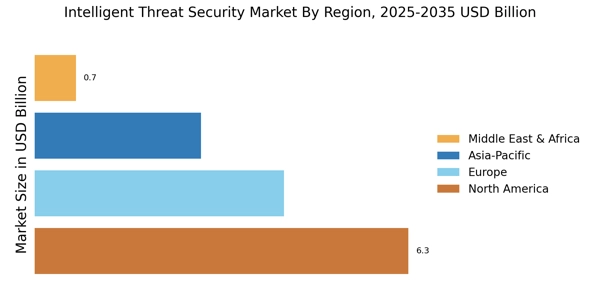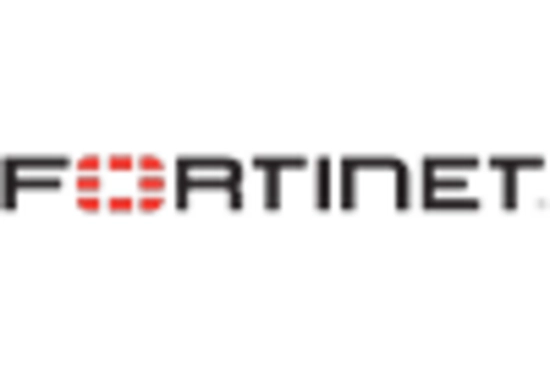The Intelligent Threat Security Market is currently characterized by a dynamic competitive landscape, driven by the increasing sophistication of cyber threats and the growing demand for advanced security solutions. Key players such as Palo Alto Networks (US), CrowdStrike (US), and Fortinet (US) are strategically positioned to leverage their technological innovations and comprehensive service offerings. Palo Alto Networks (US) focuses on integrating artificial intelligence into its security platforms, enhancing threat detection capabilities. Meanwhile, CrowdStrike (US) emphasizes its cloud-native architecture, which allows for rapid deployment and scalability, catering to a diverse range of clients. Fortinet (US) adopts a multi-layered security approach, combining network security with endpoint protection, thereby creating a robust defense mechanism against evolving threats. Collectively, these strategies not only enhance their competitive edge but also shape the market dynamics by setting high standards for security efficacy and operational efficiency.
In terms of business tactics, companies are increasingly localizing their operations to better serve regional markets, optimizing supply chains to ensure rapid response times, and enhancing customer engagement through tailored solutions. The market structure appears moderately fragmented, with a mix of established players and emerging startups. This fragmentation allows for a variety of innovative solutions to coexist, fostering a competitive environment where differentiation is crucial. The collective influence of these key players drives the market towards more integrated and comprehensive security solutions, as they strive to meet the diverse needs of their clientele.
In August 2025, CrowdStrike (US) announced a strategic partnership with a leading cloud service provider to enhance its threat intelligence capabilities. This collaboration is expected to bolster its existing offerings by integrating advanced analytics and machine learning, thereby improving the accuracy of threat detection. Such a move not only strengthens CrowdStrike's market position but also reflects a broader trend towards collaboration in the cybersecurity space, where shared intelligence can lead to more effective threat mitigation.
In September 2025, Palo Alto Networks (US) launched a new suite of AI-driven security tools aimed at small to medium-sized enterprises (SMEs). This initiative is significant as it addresses the growing need for affordable yet effective security solutions among SMEs, a segment often overlooked by larger providers. By targeting this demographic, Palo Alto Networks (US) not only expands its customer base but also reinforces its commitment to democratizing access to advanced security technologies.
In October 2025, Fortinet (US) unveiled its latest cybersecurity framework designed specifically for the Internet of Things (IoT). This framework is particularly relevant given the increasing interconnectivity of devices and the corresponding rise in vulnerabilities. By focusing on IoT security, Fortinet (US) positions itself as a leader in a niche yet critical area of cybersecurity, potentially attracting new clients who prioritize IoT security in their operational strategies.
As of October 2025, the competitive trends within the Intelligent Threat Security Market are increasingly defined by digital transformation, AI integration, and a heightened focus on sustainability. Strategic alliances are becoming more prevalent, as companies recognize the value of collaborative efforts in enhancing their security offerings. Looking ahead, it is likely that competitive differentiation will evolve from traditional price-based strategies to a focus on innovation, technological advancement, and supply chain reliability. This shift underscores the necessity for companies to not only provide robust security solutions but also to ensure that these solutions are adaptable and forward-thinking in an ever-changing threat landscape.


















Leave a Comment